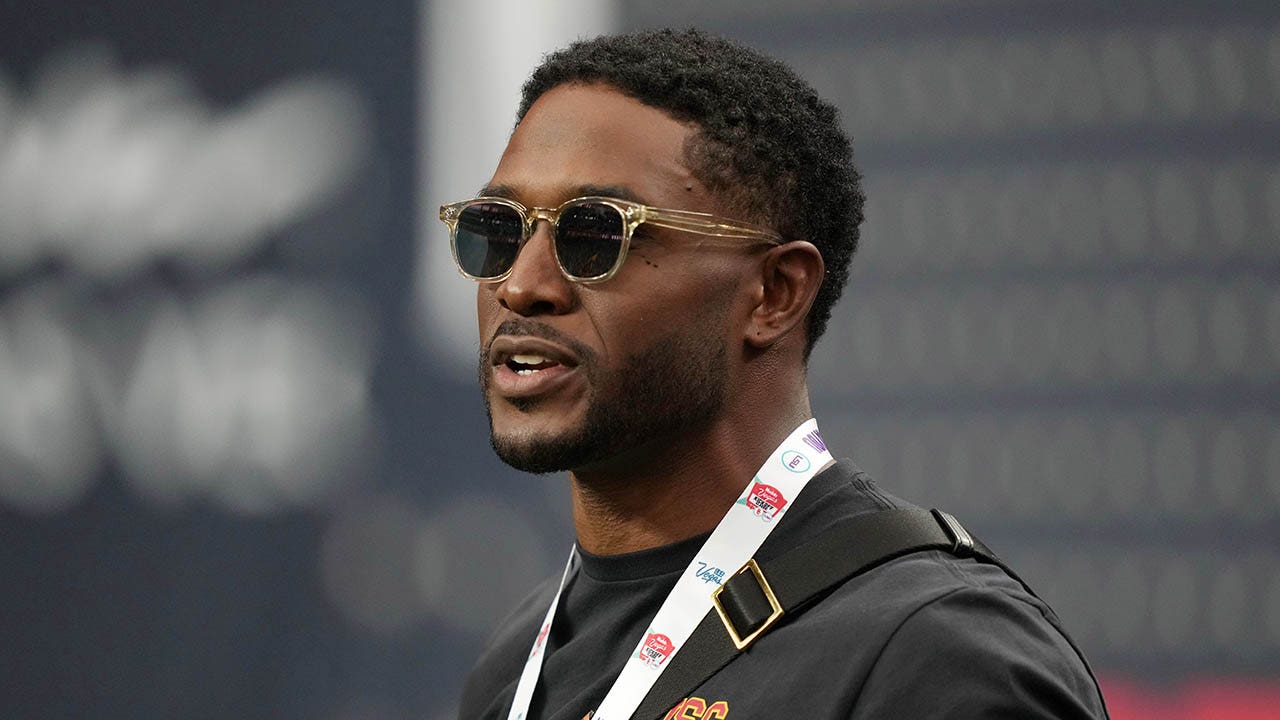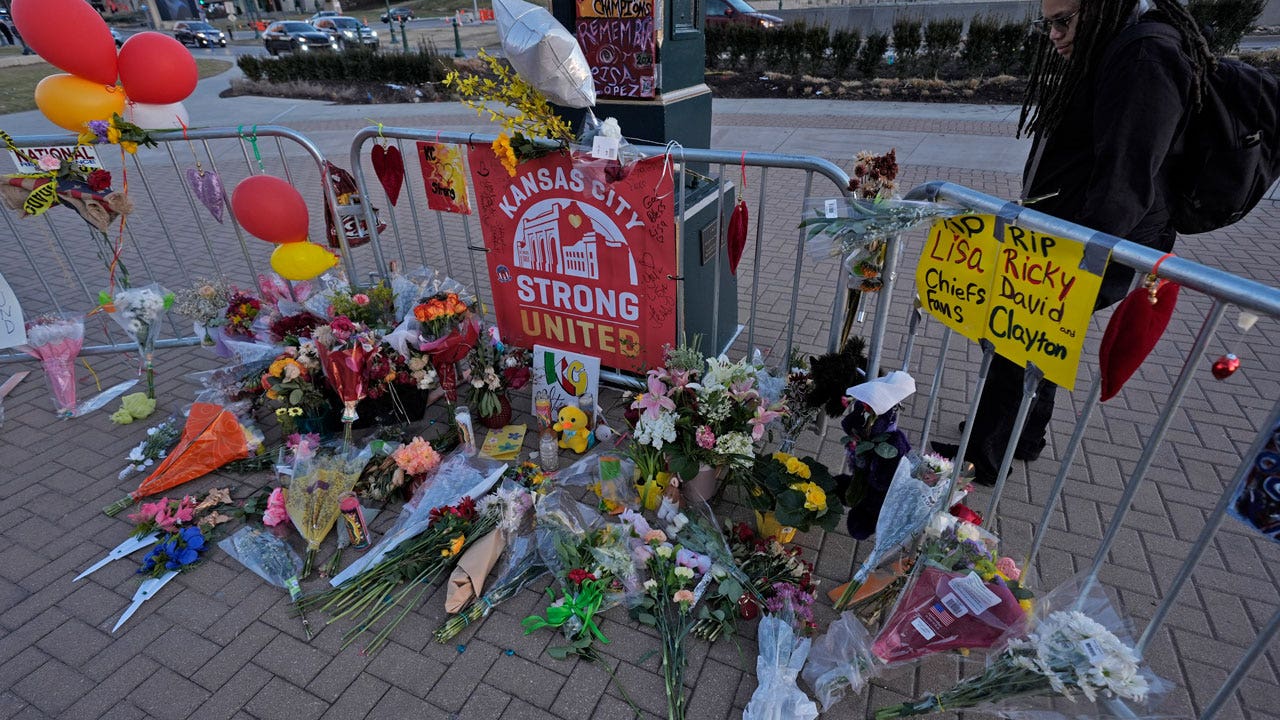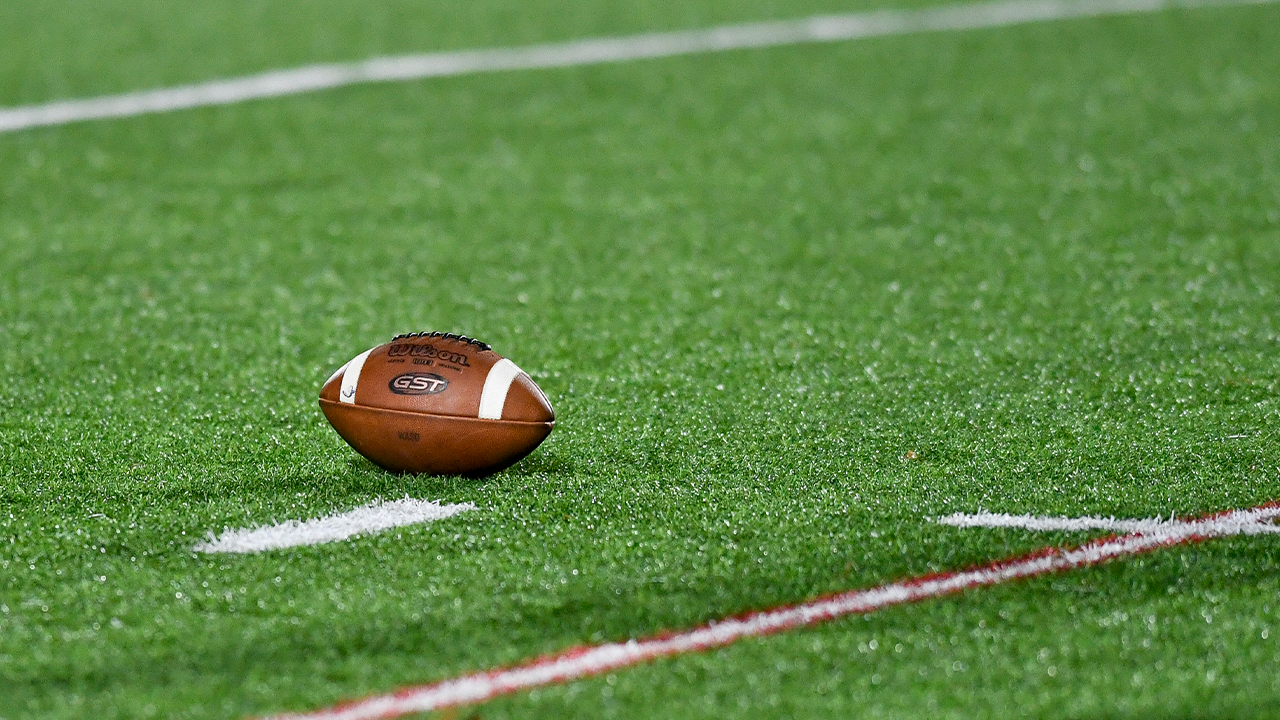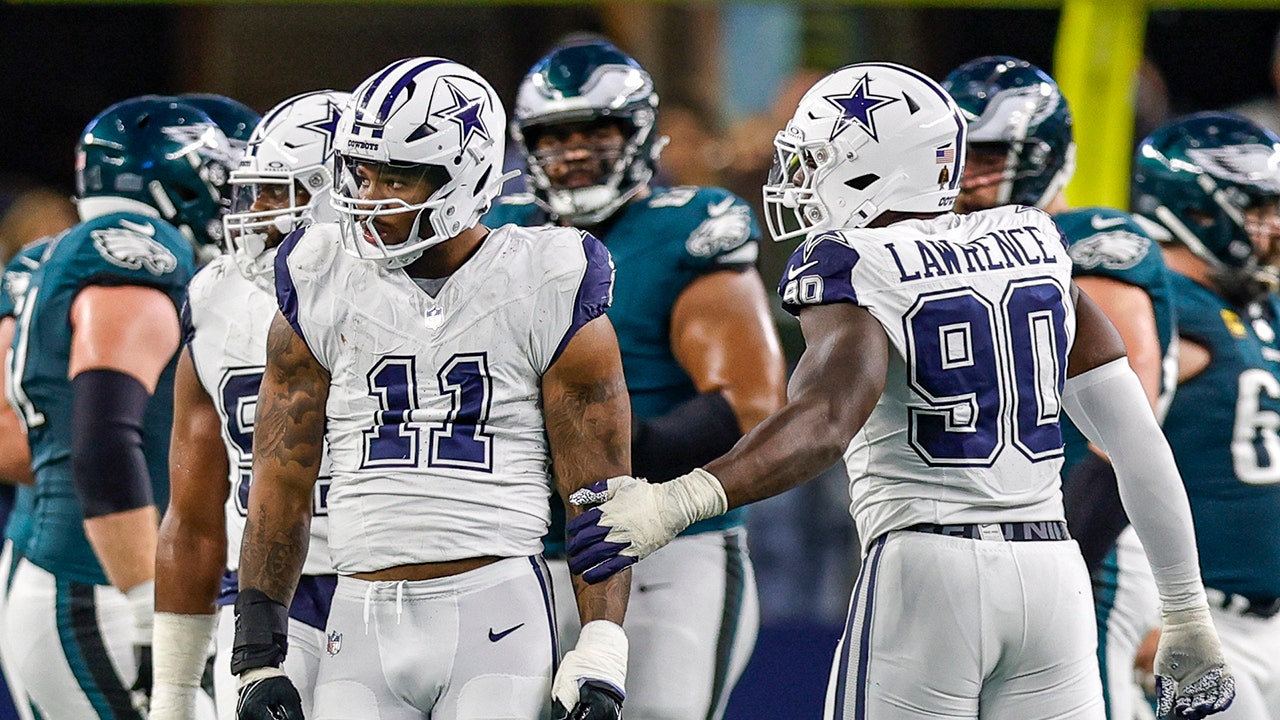EAST LANSING, Mich. — It’s 4:39 p.m. on the first day of August, somewhere near the beginning of Michigan State football finding itself again. Def Leppard and Phil Collins classics fade out and a staffer at the top of the meeting room stairs flashes a thumbs-up to confirm perfect attendance. On the massive projector screen, the words “Unity Meeting & Name Game Prep” abut a picture of an ancient soldier studying a scroll.
The first Spartan Royale can begin.
Right after an explanation of what that is.
In this case, Event No. 1 in the royale involves a skit and a subtle exercise in accountability. Players will gather in assigned groups, each intentionally a mix of positions and ages. They’ll answer “Unity Questions,” from their name and hometown to their favorite musician or movie — an attempt at hastening familiarity within a 118-man roster that’s half-new. They’ll also come to a consensus on three to four characteristics every winning team possesses.
The personal information will be the basis for a 90-second group skit. Total participation required, tactful humor and creativity imperative, judged on a score of zero to 10 in three days’ time. Those agreed-upon keywords for success? Well, those are really for Jonathan Smith, and the mirror the first-year head coach will hold up to the dozens of eyes before him.
A couple hours later, everyone returns to Whitesnake’s “Here I Go Again” on the speakers and spokesmen for each group announce entries for the “Championship Characteristics” list. Player-led. Discipline. Killer instinct. Grittiness. “That’s how you win at Michigan State,” explains fifth-year linebacker Sam Edwards. Smith nods along. The coach who doesn’t like to say much can now let his players’ words do the talking.
Smith doesn’t say that, of course. A new, exciting adventure is how he puts it. “Awesome stuff,” Smith says. “I think we’ll keep this.”
This is where Michigan State is. Learning first names and saying the basics out loud. Digging up in a super-sized Big Ten after failure and scandal. But the thinking is if Jonathan Smith can win at a place like Oregon State, his previous stop, and win how he won at Oregon State, he should be able to win at a place like this. He just has to do what he did there.
After all, this used to be called the Beaver Royale.
Two years ago, Michigan State football floated on the promise of 11 wins and a top 10 ranking in the final Associated Press poll of the 2021 season. The Spartans then won nine times in their next 24 tries. The school fired head coach Mel Tucker last September, less than three weeks after Brenda Tracy, an advocate hired to educate his team about sexual violence prevention, went public with allegations of sexual harassment against Tucker.
The football program now has its fourth head coach in the past six seasons, and third in a calendar year. There are 61 new faces on a roster of 118 players, the fifth-highest number in the country. The archrival down the road, meanwhile, just won a national championship. And, on the second day of these preseason workouts, with everyone trying to lock their eyes on what’s ahead, Tucker filed a 75-page wrongful termination lawsuit against the school.
It’s been a lot. They’re a long way from solving any of it.
And so athletic director Alan Haller, a former Michigan State defensive back, watches an early August workout and talks about the need for stability. Here, that’s less a concept or imperative than an identity. Flash doesn’t play, or hasn’t. Bravado doesn’t sell. The football program operates out of a state-of-the-art $67.75 million facility that opened in April, yes. Still, the namesake of The Tom Izzo Football Building is a man from Iron Mountain who has coached the men’s basketball team for 29 years and who is basically made of igneous rock. Correcting the trajectory of football wasn’t about change. The mission, at its core, was finding the best Michigan State coach who wasn’t currently coaching at Michigan State.
“Grit and toughness and being resilient,” says fifth-year linebacker Cal Haladay, who notably grew up working on his family farm in Elysburg, Pa. “That’s Michigan State’s brand.”
After starting at quarterback for three years at Glendora (Calif.) High, Jonathan Smith had three college football options: Humboldt State, UC-Davis or walking on at Oregon State. He chose the Beavers, banked on then-coach Mike Riley’s promise that he’d be treated like any other player and ultimately left as the school’s all-time leading passer.
He returned to his alma mater as head coach in 2018 and turned it from a one-win calamity into a top 20 program mostly via the run game, play-action shots and low-risk defense. Among the 45-year-old’s most-repeated coaching bromides: The star of the team is the team. He likes his vacation house in Idaho not least because the cell phone reception is spotty, dropping a blackout curtain between him and the job for at least a couple weeks.
And he happened to be approachable, mostly because the Pac-12 crumbled and Oregon State was speared by the wreckage. “I felt I owed it to not just myself professionally, but the (assistant) coaches, to be a little more open-minded when all that was going on,” Smith says. “And when I looked into Michigan State, I did feel like it fit. Blue-collar. Work ethic. College town. And then, yes, being part of the (Big Ten) conference, and the tradition here. Thought it was an opportunity that was pretty good.”
Good is not the same as simple. “Everything going on with our coach, and outside noise, it kind of tore our team apart a little bit,” fifth-year receiver Montorie Foster Jr. says now. Smith acknowledged the upheaval felt by players upon his arrival but also handed out a short questionnaire at the first team meeting. It featured three questions, with the option to answer anonymously.
What do we have to keep doing here?
What do we have to do differently?
What’s the No. 1 thing holding us back?
Collectively, the group put high value on maintaining traditions like the Spartan Walk and sticking with morning practices. So the program will keep both. Collectively, the players grumbled about the quality of training table food. So Smith asked the administration for improvements, and thus far, diners at the Izzo Football Building are happier.
One player simply left his phone number on the sheet. If you read this, call me, he wrote. So Smith called him. “You get some instant credibility that way, I feel like,” Smith says. “Small wins.”
As for the third question, the one about impediments to success, the responses were predictably glum from a punch-drunk audience. Morale. Trust. Egos.
Smith expected as much. He also once thought only Division II and FCS schools wanted him, and he wound up beating Notre Dame in a Fiesta Bowl. If nothing else, he could fix that. “He says it all the time, you hear it: Low ego, high output,” says quarterback Aidan Chiles, echoing another Smith chestnut that’s already so ubiquitous it’s almost an inside joke. “We’re not here to show off.”
Smith, for example, actually loved running the scout team during his redshirt year at Oregon State, even as the first-team defense pounded away daily. “The chip on your shoulder, right?” he says. “Every rep counted, because you didn’t get a bunch early on. Nothing could be casual.”
Within a week after hiring Brian Lindgren as his offensive coordinator at Oregon State, Smith met with Lindgren to discuss core schematic principles. Success running offenses at Boise State and Washington got Smith the job, so Lindgren guessed this wouldn’t be the end of instructions from his new boss. Instead, it more or less was. “Honestly, we haven’t really talked much about it since,” Michigan State’s new offensive coordinator says. Smith also told Lindgren he didn’t like being second-guessed as a play-caller on game days. It tightened him up. So when key third- or fourth-down calls failed during their time in Corvallis? Silence on the headset.
“I was pretty surprised he’s been able to stick to it that way,” Lindgren says, going into Year 7 on a Jonathan Smith staff. “Everything he says is very calculated, very calm, even in stressful moments. There’s not a lot of panic. Ever.”
There’s not necessarily a lot of words, either.
It’s no exaggeration that, throughout hours-long Michigan State practices, the new head coach is seen and rarely heard. If at all. A false start? A whistle from Smith to indicate everyone should move on to the next play. A quarterback turns the wrong way on a handoff? Whistle. Next play. Two receivers collide downfield, because someone very obviously ran the wrong route? A whistle, a pause to ensure neither is hurt, and then on to the next snap.
The demeanor has its inherent pluses, to be sure. “I’m an East Coast Italian,” defensive coordinator Joe Rossi says with a smile. “I get my blood pressure up a little higher than his, and he has a little bit of a calming effect on me.” Some of it is calculated. The reveal of the “Championship Characteristics” list – plus Smith’s giving his take on it to the team – lasts all of 11 minutes. Staff meetings are, as Smith puts it, “to the point.” When a debate about recruiting regionally or positionally morphed from opinions to tangents, Smith hit pause and announced they’d revisit it, so everyone could move to the next task.
“I don’t know if it’s ‘quiet,’” says offensive line coach Jim Michalczik, who has known Smith since his boss’ playing days at Oregon State. “He’s not talking just to talk. He puts a lot of thought into what he says and usually hits the nail.”
There are guys who think words are gasoline. Then there’s Jonathan Smith, California dude with a Midwest address.
Chiles looks like a laser-printed Big Ten quarterback – 6-3, 217 pounds, with an arm that overthrew a receiver maybe 60 yards downfield during the fourth practice of the preseason – but he arrived at Oregon State as a 17-year-old midyear enrollee in 2023. He pressured himself to pressure D.J. Uiagalelei for the starting job last August, which locked up Chiles on the field. Smith pulled the freshman aside. He slowed him down. He sent Chiles to a sports psychologist. “He was just a human I could talk to,” Chiles says now. The freshman wound up in a defined role – he was scripted into the third series in nine games – and averaged 11.1 yards per pass attempt without throwing an interception. When rumors of Smith’s departure emerged, Chiles says he made it very clear to his coach: Wherever you’re going, I’m going.
Home🏠 pic.twitter.com/M45AE6RkEg
— Aidan Chiles (@ai6an_) December 14, 2023
“He’s here to coach you, of course, but at the same time, whatever you need, he’s here for you,” Chiles says. “Somebody you can talk to. Somebody you can confide in. That’s my dog. That’s my guy.”
In all, it’s less in the pursuit of more.
When Rossi describes the ideal defense he’s bringing from a six-season stint at Minnesota, he talks about stopping the run and limiting explosive plays, not an exotic and unrelenting blitz package. “I’ve heard people talk about ‘havoc rates’ and things like that, but ‘havoc rates’ don’t lead to wins,” Rossi says. “Not letting people score leads to wins.” (In 2021 and 2022, Minnesota respectively ranked sixth and fourth nationally in scoring defense, before slipping to 69th in 2023.)
Likewise, Lindgren describes an offense with balance, one that marries a physical run game to play-action passes for downfield shots. (In 2021 and 2022, Oregon State was nearly at or above 200 yards rushing and passing per game; 2023 was a bit more pass-heavy.)
Smith says he will not accept patience with the bigger picture. That Year 1 will be about chasing wins and not some prolonged rehearsal for becoming Oregon State 2.0. But even when the head coach explains what his program looks like when it’s right, he sounds granular and rooted and plain. “Plays are getting executed, and we’re staying on our feet,” he says. “Guys can go full speed, it’s damn competitive, and they’re looking out for each other.”
After the past two years, Michigan State is beyond living with that. Michigan State has to be that, and even then hope it is enough. It has slipped all the way from Rose Bowls and playoff appearances to next to nowhere, and now a quartet of schools from the Pacific Coast stampede into the Big Ten and squeeze even more air out of the space. It’s a two-front battle for a program defined by defiance: for championships and against utter irrelevance.

Jonathan Smith was 18-7 in his final two years as head football coach at Oregon State. (James Black / Icon Sportswire via Getty Images)
On the fourth day of preseason camp, the current Michigan State football coach walks on to the indoor field with five minutes left on the pre-practice countdown clock. After about 15 yards, he breaks hard to his right to greet a visitor who looks tan and fit and entirely satisfied to let someone else handle the work.
Mark Dantonio has done these preseason swings for a few years, visiting old friends or former homes. Wide open doors are a perk of retirement and, especially in this place, a product of nostalgia. As he walked through the atrium earlier, Dantonio caught sight of a display with the numbers from a 2014 season that produced 11 wins and a Cotton Bowl victory. This followed a 13-win campaign, while preceding a 12-win season that ended in a College Football Playoff semifinal loss to eventual national champion Alabama.
“We had it rolling,” Dantonio says, as if he can’t quite believe what happened.
What happened were 114 wins — the most ever by anyone to run this program, eight wins against Michigan in a 10-year span, and the establishment of a Hall of Fame-worthy archetype here. Minimal flash. Maximum substance. Even on a Friday morning in August 2024, Dantonio watches warmups and asks a school staffer who the offensive line starters are. People want to tie a string to Dantonio that connects to Jonathan Smith on the other end, not only because of the winning but also how the winning came about. That Dantonio himself thinks back to his arrival in late 2006, and the staff he brought with him from Cincinnati, and the common language they spoke from the very beginning, and how it reminds him of this transition — well, it might as well be Michigan State fan fic breathed to life.
“I like him,” the 68-year-old grandfather in the white polo shirt says, nodding, apprising the man doing the job he once did. “He’s down to earth. When bad stuff happens, he doesn’t overreact.”
Everyone moves outside for stretches, and as the Spartans check that box and jog to spots for the actual football work, Smith yanks off his green hat. He waves it around. He’s trying to catch the attention of whoever is running the practice period clock, which has not started. And this is about as animated as Michigan State’s coach gets over the next two-plus hours.
He moves a little quicker and is a little more vocal during a drill predicated on tempo, but he probably says more in follow-up conversations with Dantonio than he does to anyone else for the duration. Smith’s post-practice address to the team touches on the “Championship Characteristics” list created a day earlier, but he’s barely audible a few yards away. It’s only a brief reminder, and only a very specific audience needs to hear it. And then it’s on to the rest of a day that’s pretty much the same as the three days before and all the ones that will come after.
About an hour later, sipping coffee and wearing the same black polo shirt and black shorts he wore between workouts the day before, Smith notes his office was totally empty when he arrived. He requested some color, and that’s why there are helmets on shelves and four large pictures on the walls. But he still has to personalize the room. He has to bring some trinkets from the house to turn a space previously occupied by others into something more familiar. Something that fits right in.
“Came in here and it was blank,” Smith says. “Which I appreciated. They’re going to let me make it my own.”
(Illustration: Eamonn Dalton / The Athletic; photos: Jeffrey Brown / Icon Sportswire, Mike Mulholland / Getty Images)






